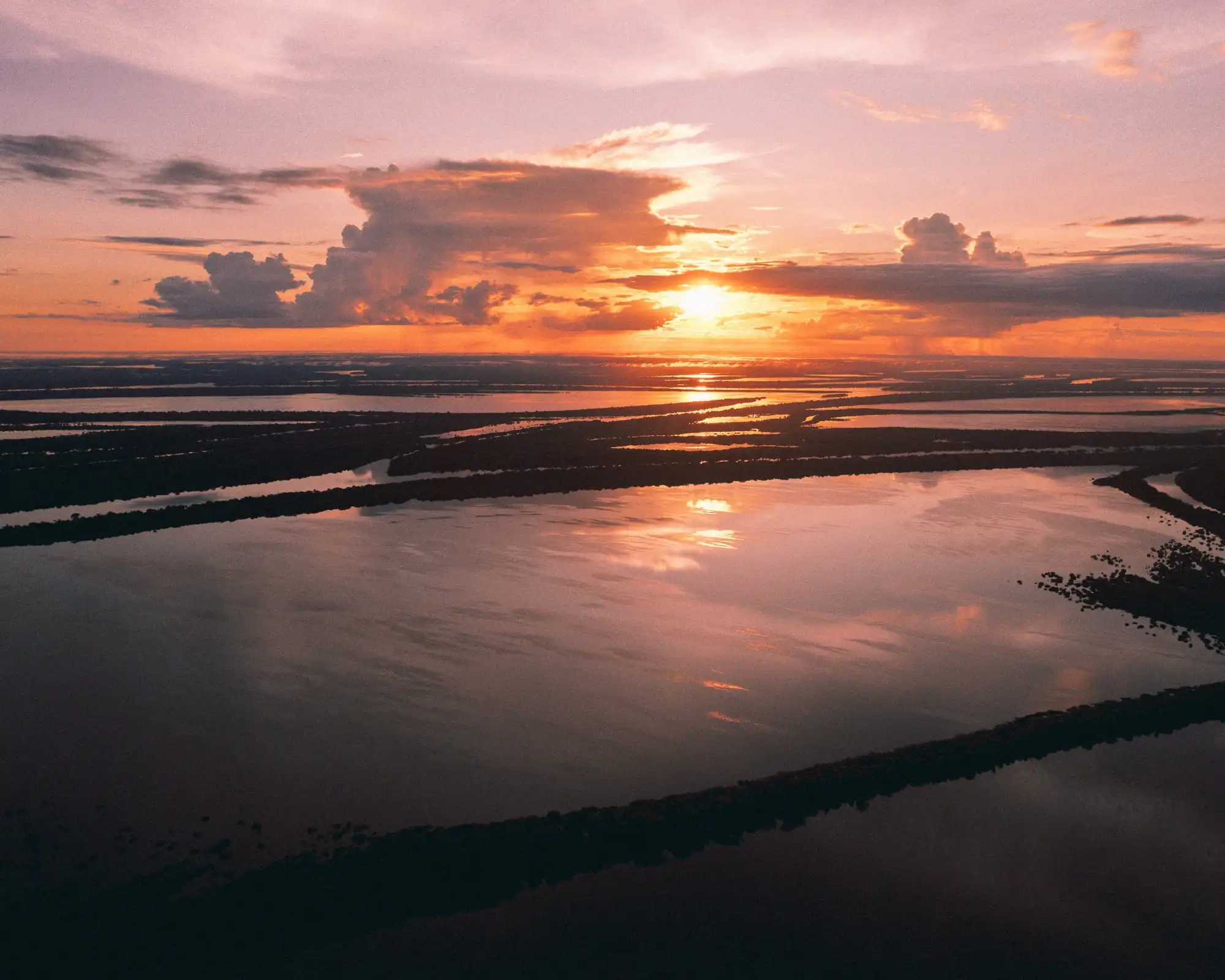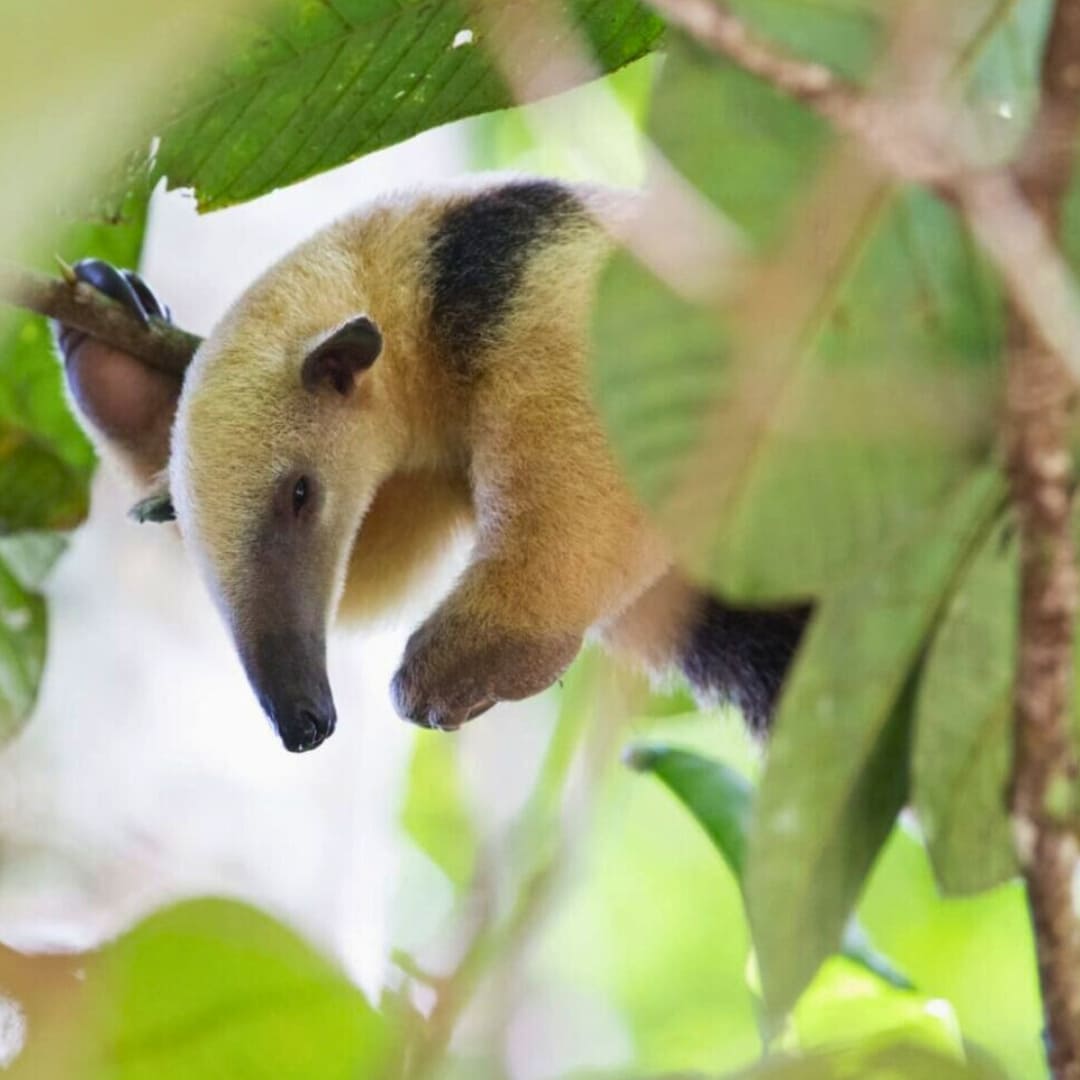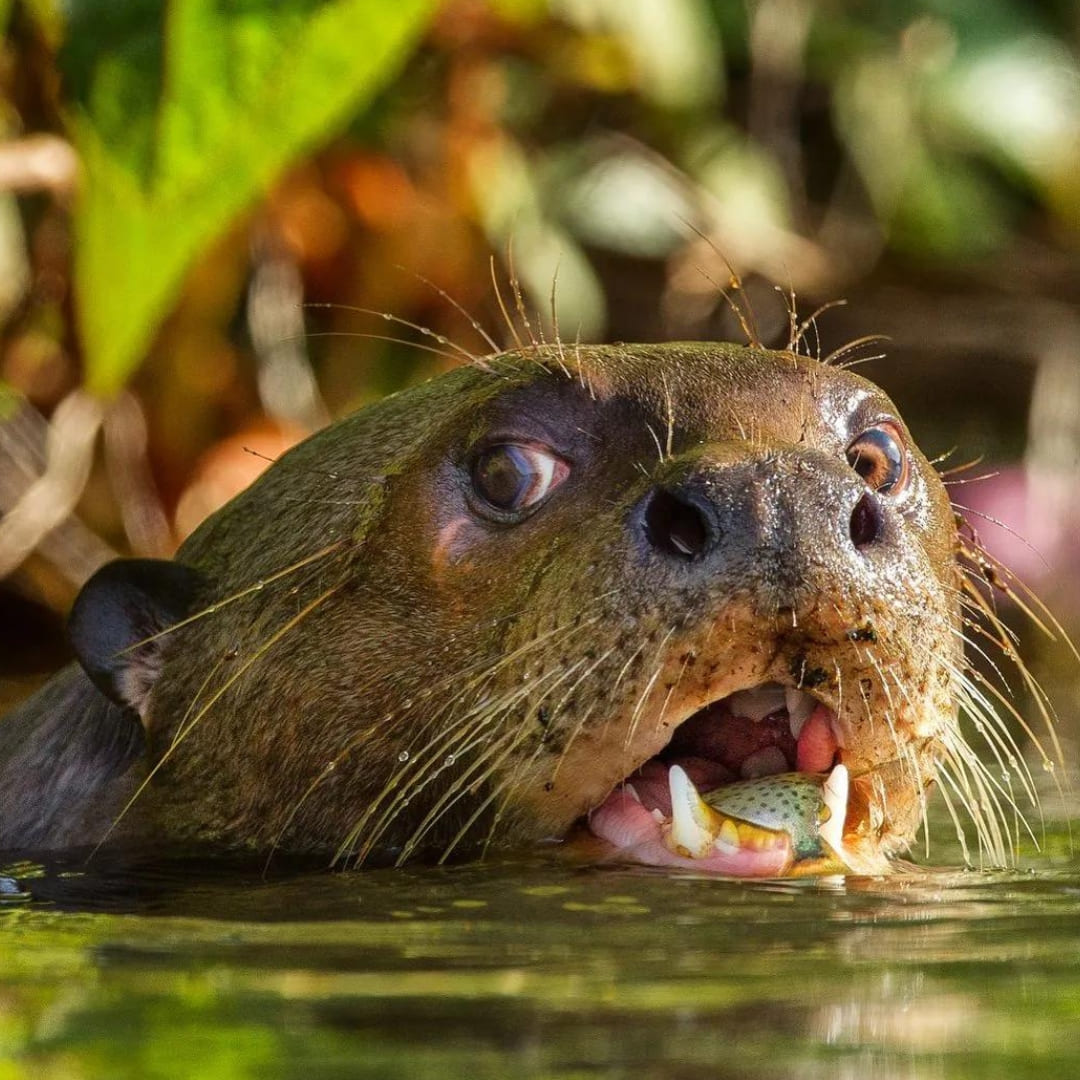Not sure when is the best time to visit the Amazon Rainforest? Don’t worry, this guide will help you plan your next vacation!
Let’s start by saying this is an all-year-round destination, but the actual best time to visit the Amazon in Brazil is between January and September. This way, you can avoid the peak of the Dry Season, when severe droughts impact the forest ecosystem and available activities.
In general, the weather is warm throughout the entire year, but it’s the humidity you should pay attention to. Rain is pretty much an everyday occurrence, but there are specific periods of time in which rainstorms are more common. This is important because it directly affects the activities. If you’re looking forward to exploring the rivers, for example, then you should prioritize some months over the others.
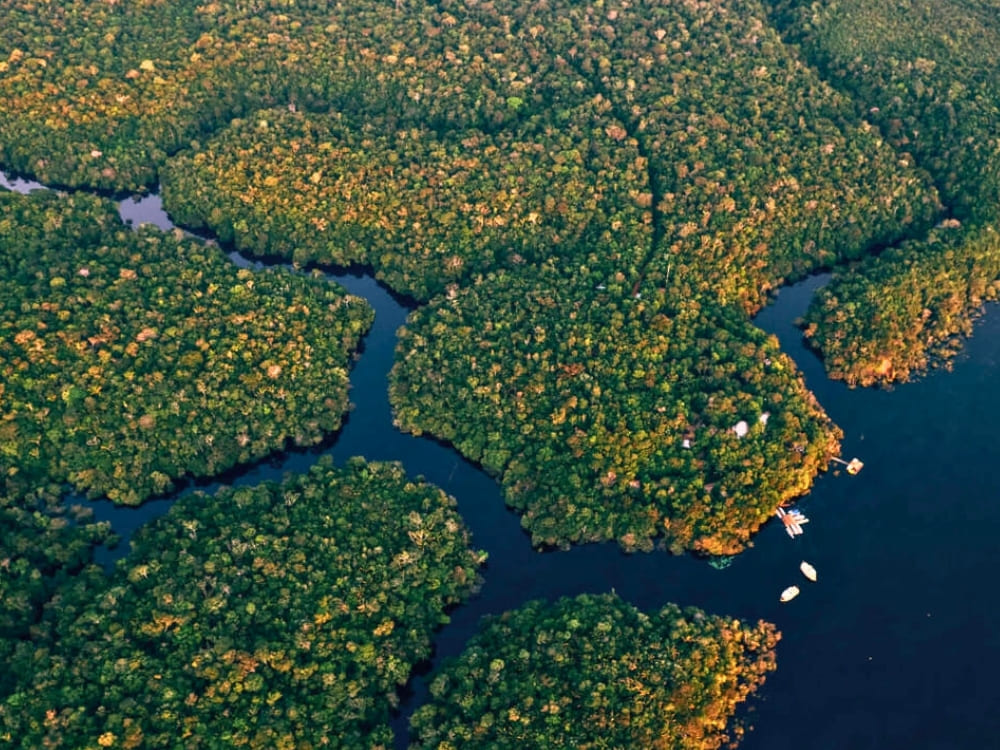
Another thing to think about is that the Amazon Rainforest in Brazil is huge, taking over various states, like Amazonas, Mato Grosso and Pará. Unsurprisingly, this means the weather conditions vary.
Check below our helpful guide and see for yourself when is the best time for your Amazon tour in Brazil!
Visiting the Amazon during the Wet Season (December to May)
Wet Season – or High Water Season – is when the rain is the heaviest, between the months of December to May. Rivers get higher, the Amazon Basin starts to flood and the weather is slightly cooler, with an average temperature of 25,8 ºC (78 ºF).
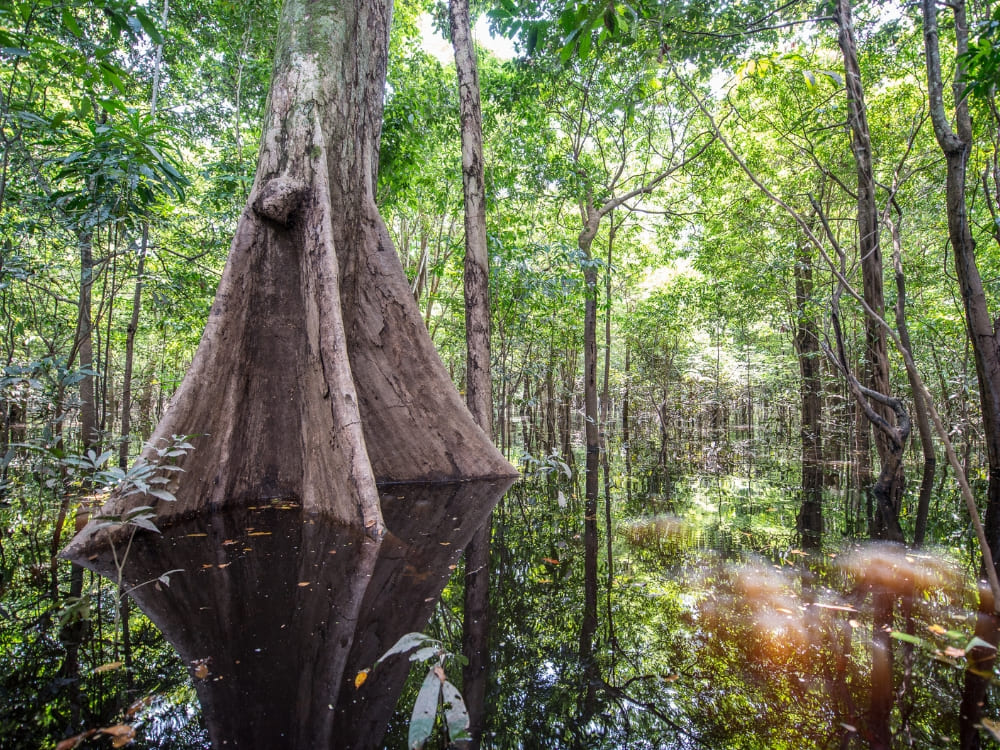
Rainstorms will hit the forest daily, but your trip won’t be negatively affected, since they only last about an hour per day. When the sky clears, you are able to go back outside and enjoy yourself.
What to do during the Wet Season in the Amazon Rainforest?
This is the perfect season for water-related activities. For adrenaline lovers, kayaking is a great option. Those who would prefer something a bit slower should jump in a canoe to sail through the Amazonian rivers – an amazing way to appreciate the view and really connect with nature.
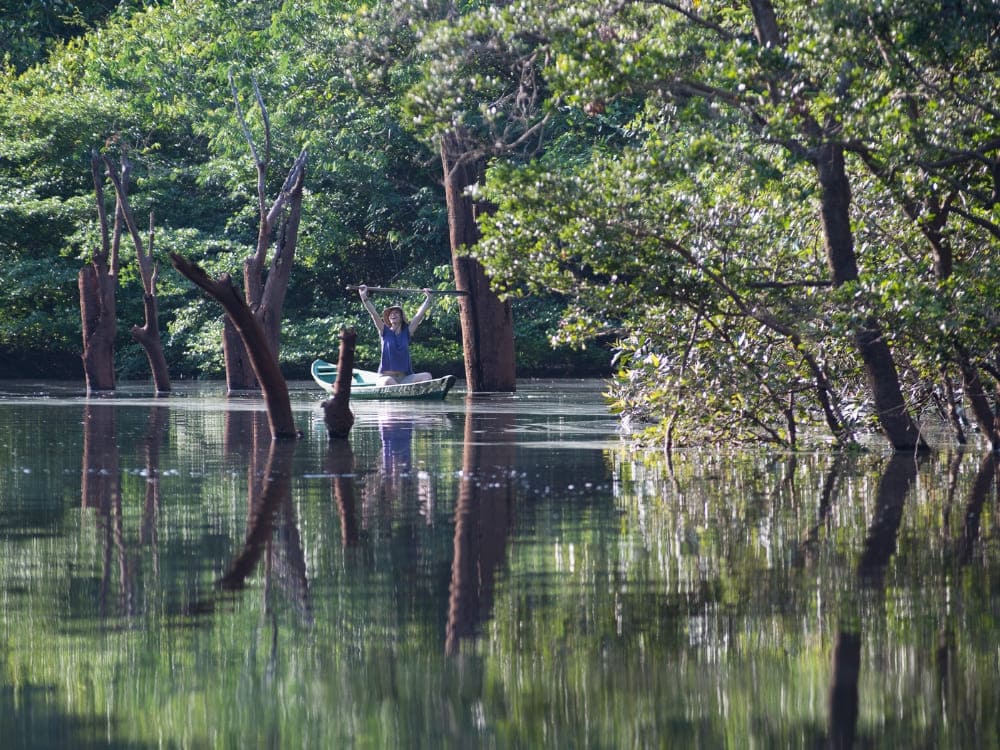
Both of these options are available in Amazon river cruises. Three-level boats with ensuite cabins, excellent beds, air conditioning and a charming decor take guests to the most beautiful spots in the forest through its rivers, offering a wide range of activities and the opportunity to live an experience unlike any other.
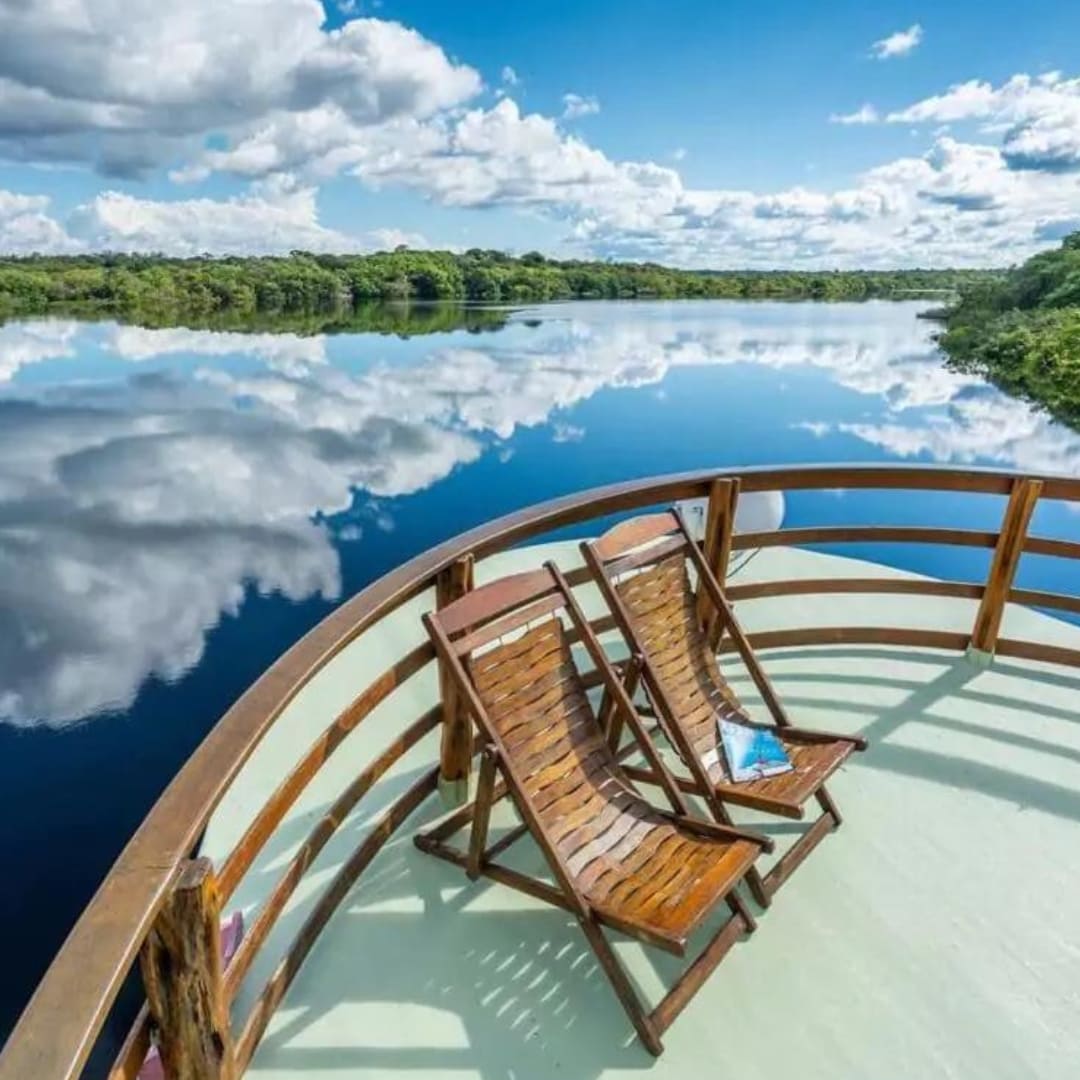
Wet season is also terrific for wildlife watching because the rain makes animals flee their hideouts to protect themselves from the water. As the rainforest floods, plenty of creatures seek refuge by climbing tall places and exposing themselves when the day is still bright.
Visiting the Amazon during the Dry Season (June to November)
Between June and November, the Dry Season, also known as Low Water Season, makes the temperature warmer, with an average of 27,9 ºC (82 ºF). It still rains, but it’s less frequent and the water volume is lower. This allows the floods to drain, unblocking various hiking trails that were submerged before – although there still are a considerable amount of flooded areas.
Less rain also means reduced rivers and a better look at different species of fish and even Amazon pink dolphins. When the water recedes, aquatic animals have less space to swim around, so their occupation is concentrated in smaller zones.
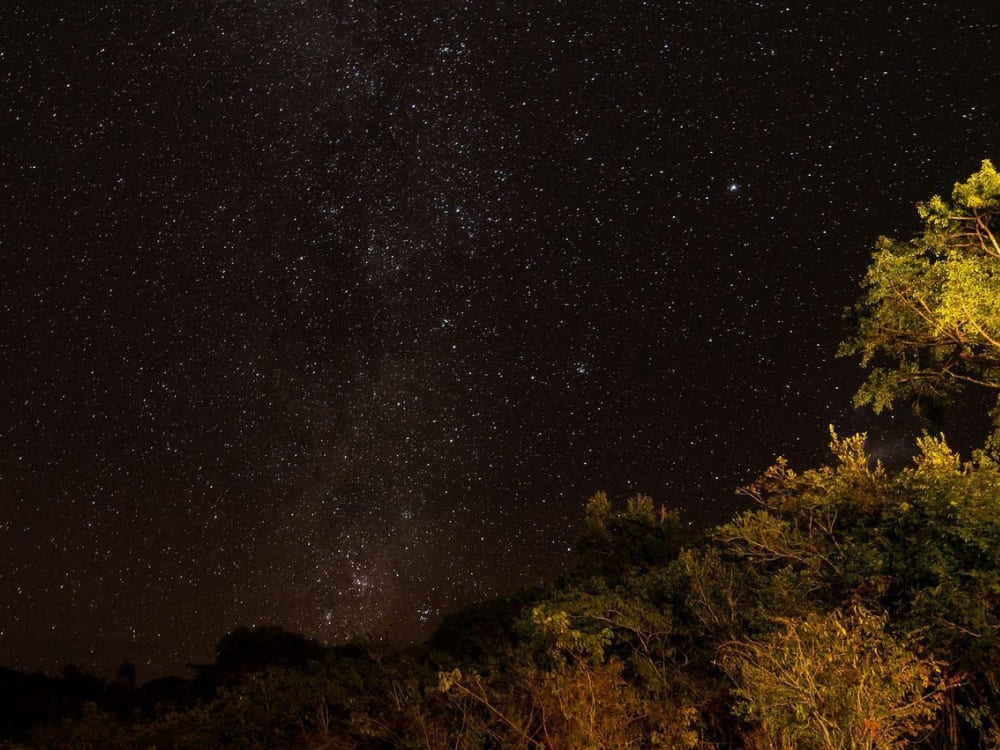
Photo: @thiagocruz_photo
Keep in mind: from October to December, extended dry seasons are becoming more frequent in the Amazon, causing rivers to shrink, limiting the access to a few areas and potentially reducing the encounter with some species of animals and plants. The rivers are expected to start rising between the end of November and the beginning of December, albeit slowly. By January, the conditions will be much better, so we recommend booking your tour from this month onwards for the best customer experience.
If you have any questions about when you should plan your vacation, don’t hesitate to contact PlanetaEXO. We’ll be happy to help!
What to do during the Dry Season in the Amazon Rainforest?
Many people consider the Low Water Season the best time to visit the Amazon in Brazil because activities are very generous. Even though there’s less rain, it’s still a rainforest. In other words, water is generally abundant at any time and the chances of doing Wet Season activities – kayaking, canoeing, boat trips – during the Dry Season are fairly high.
Land-based schedules are the highlight during these months. If you love hiking, you should definitely invest in traveling during this time of the year. The best way to hike is alongside guides who work with the jungle lodges located in the Amazon. Those are experienced professionals who can keep you safe and show you some of the secrets hidden deep into the forest.
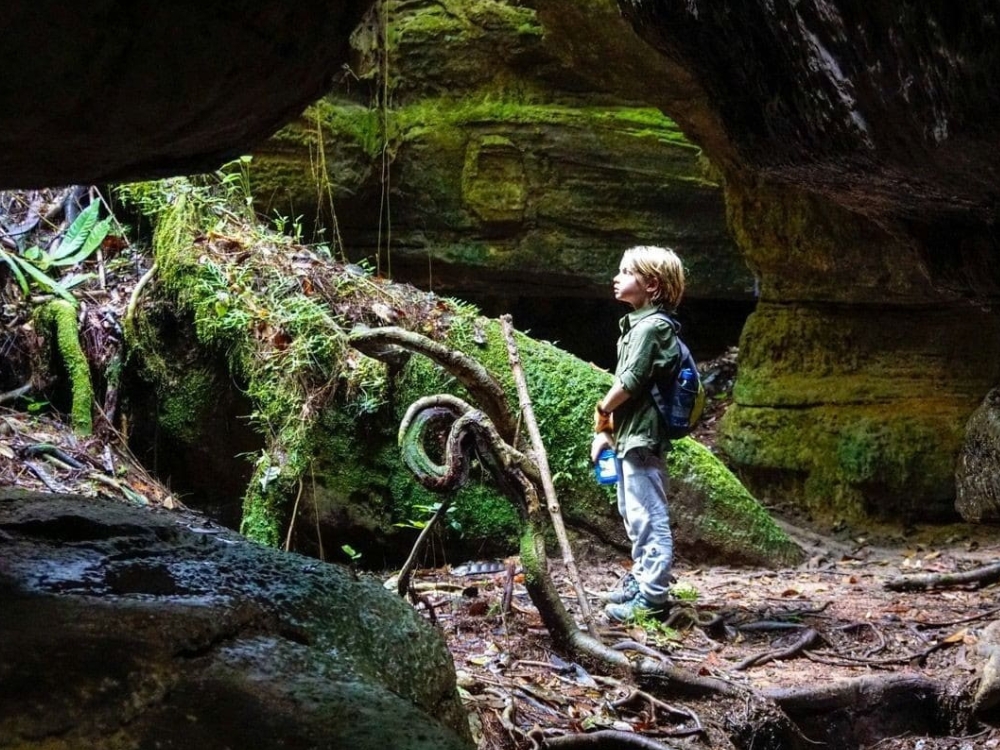
Since it’s easier to spot animals in the rivers, fishing becomes significantly less complicated too, especially for newbies. There are over 3000 species of Amazonian fish, but the star of the show is the piranha. Most guests love recreational fishing for the expectation and the thrilling feeling of victory when a fish is finally caught – if that fish is a piranha, the win is even bigger! Expert guides help everyone with techniques and safety practices, so there’s no need to be scared.
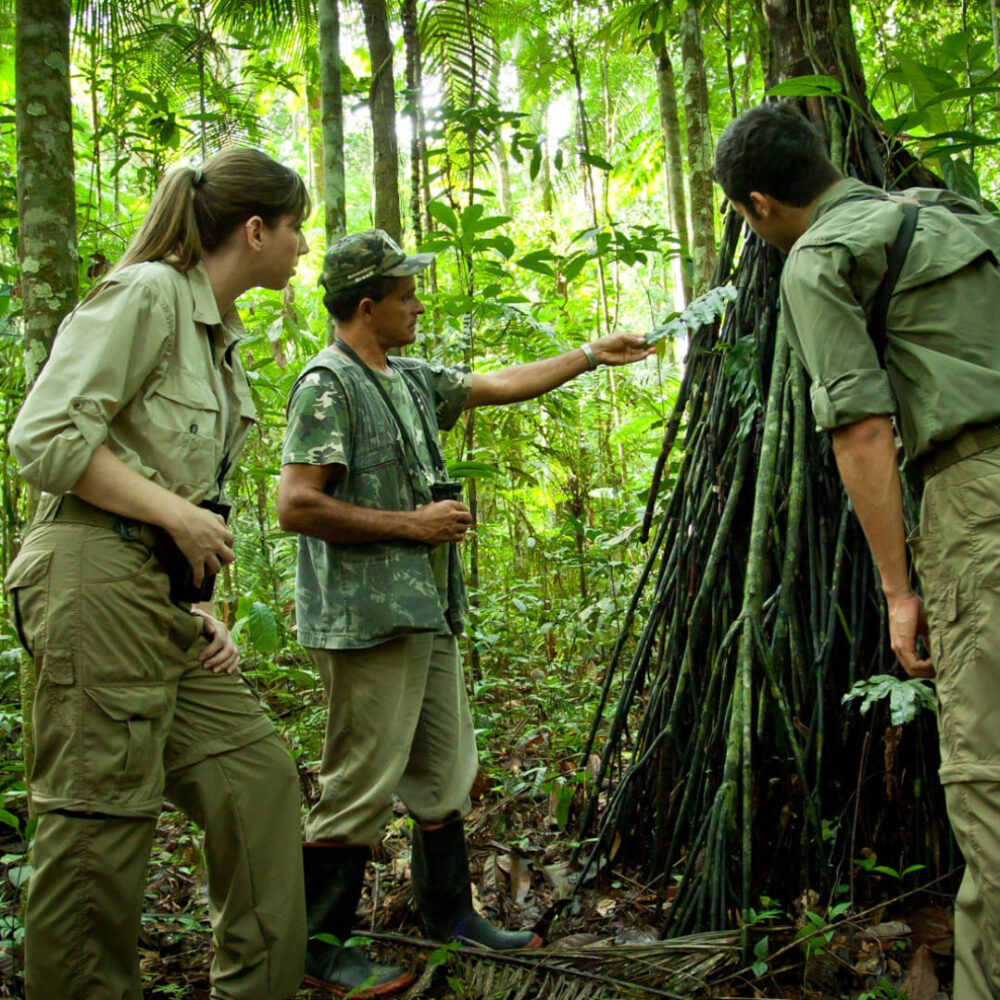
Some locations become particularly gorgeous at this time of the year, like the Anavilhanas archipelago, protected by Anavilhanas National Park. When the water lowers, the islands resurface, creating beautiful white sand beaches. The most visited are Praia da Orla, Aracari, Bararoá, Folharal/Canauirí, Iluminado and Sobrado – with the exception of Praia da Orla, all beaches are only accessible by the river (Rio Negro)
👉Explore the best places to visit in the Amazon rainforest, Brazil
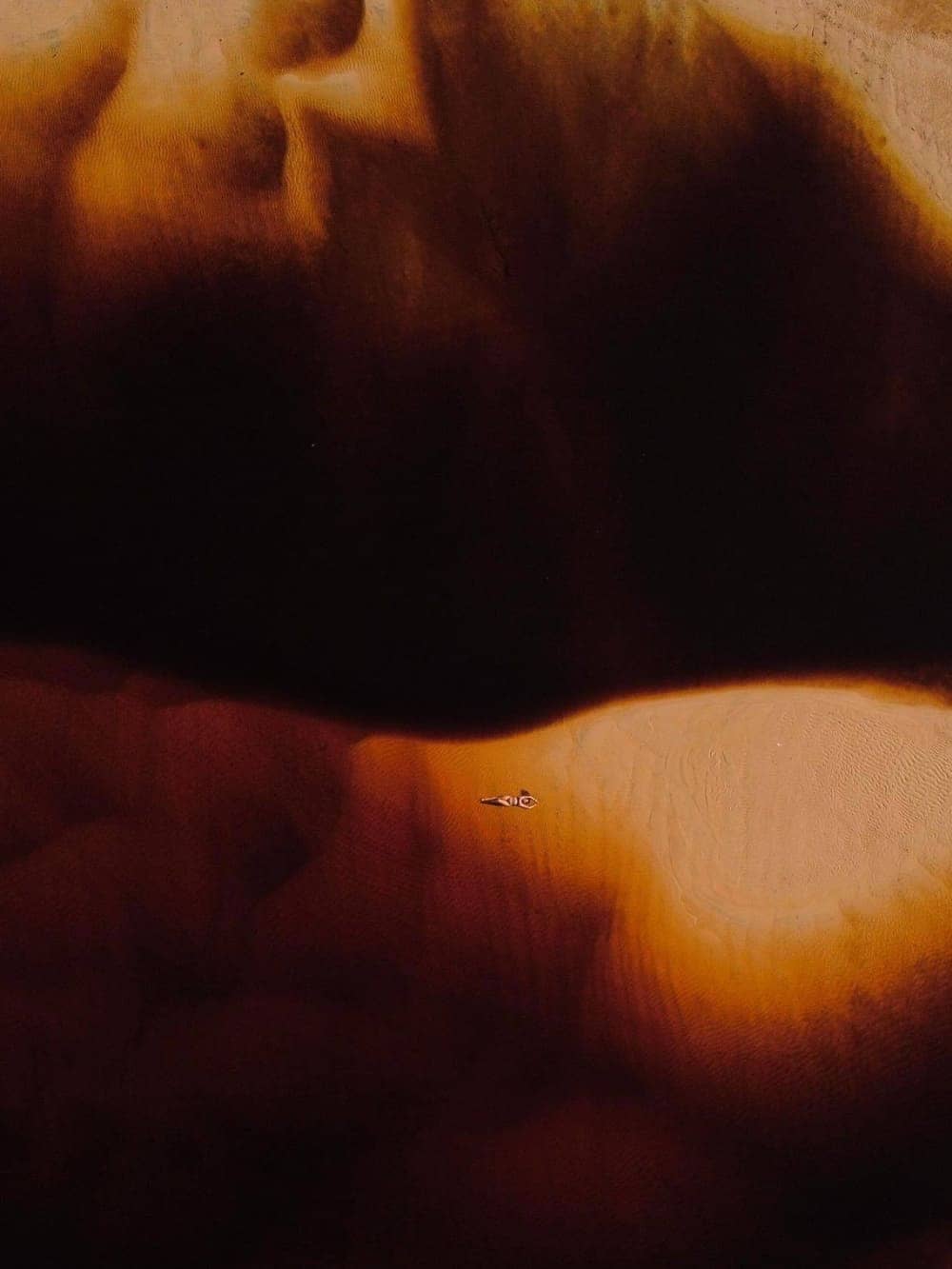
At Anavilhanas National Park when the water lowers, the islands resurface, creating beautiful white sand beaches. Photo: @partiuamazonia
What is the current weather in the Amazon Rainforest?
As previously mentioned, the Brazilian rainforest is big enough to touch different states, but we’ll focus on three: Amazonas, Pará and Mato Grosso. All of them, of course, have their own features, travel options and weather patterns.
To help you decide when is the best time to visit the Amazon in Brazil, check the widgets below to see how the weather is right now in Amazonas, Mato Grosso and Pará.
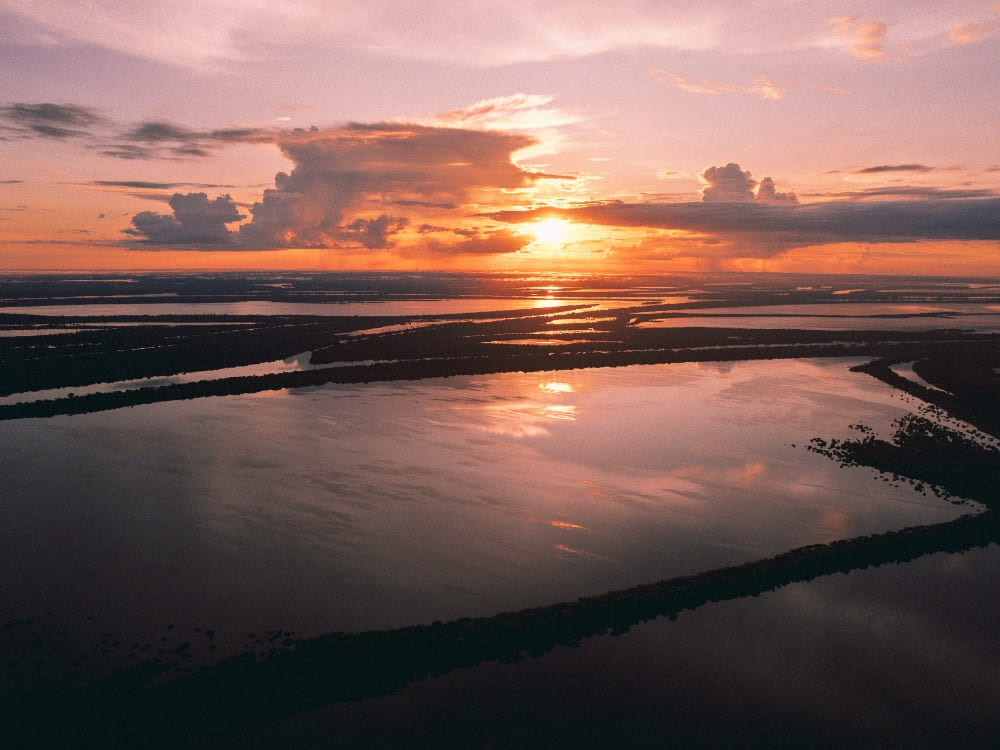
Manaus, Amazonas
Manaus is the capital of Amazonas, the state in which the forest occupies the largest portion – about 29% of the Brazilian Amazon, ranging 1.450.00 km². It’s bigger than the entire country of Peru (1.285.216 km²)!
That’s why Amazonas is the most seeked out destination for a lot of people who want to immerse themselves into the Amazon Rainforest. Makes sense, huh?
Belém, Pará
Pará sits right besides Amazonas, in the North of Brazil. The Amazon takes up a smaller area here, with “only” 930.00 km². It’s almost as big as Tanzania (947,303 km²), in Africa.
See below how the weather is right now in Belém, the capital of Pará.
Alta Floresta, Mato Grosso
Alta Floresta is a town in Mato Grosso with a population of over sixty-one thousand people. It’s located in the north of the state and the south of the Amazon. The rainforest takes up 470.000 km², more than the California area (423,967 km²).
Take a look at the current weather in Alta Floresta:
The best time to visit the Amazon in Brazil is whenever you want!
The Amazon Rainforest in Brazil is full of possibilities for an unforgettable visit all year-round, but take into account the period between January and September, which has the best weather conditions for most activities.
Now all you have to do is choose the most convenient date for your schedule and, of course, plan your trip with PlanetaEXO! Our team will help with everything you need to make your Amazon tour one of the best moments of your life. We hope you’re ready for some adventure!

